1. Presidential Reference on Governor’s Assent to Bills – Polity
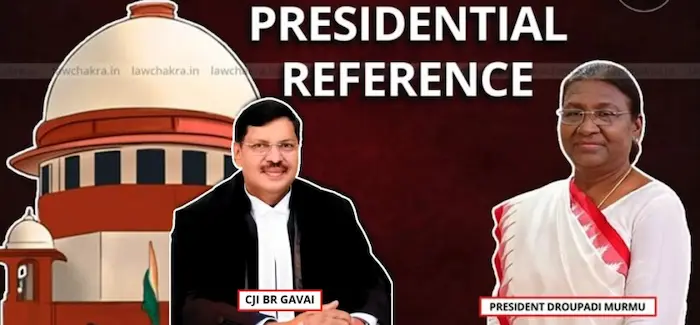
What is the News?
The Supreme Court has reserved its opinion on a Presidential reference under Article 143(1) concerning the powers of Governors and the President in granting assent to Bills.
This comes after the Court’s April 2025 ruling where it held Tamil Nadu Governor R.N. Ravi’s delay in assenting to 10 Bills unconstitutional. The Court enforced assent using Article 142 and prescribed timelines for such actions, sparking debates on federalism and judicial overreach.
Key Takeaways & Background:
Nature of Presidential Reference (Article 143):
- Allows the President to seek Supreme Court’s opinion on questions of law or constitutional interpretation.
- States argue this reference acts as an indirect appeal against the April 2025 judgment → undermines stare decisis (judicial precedent).
Governor’s Powers under Constitution:
- Article 200: Governor may
- Assent to a Bill
- Withhold assent
- Reserve for President’s consideration
- Return (if not a Money Bill)
- Article 163: Governor acts on aid & advice of Council of Ministers, except in matters of discretion.
Governor’s Veto Powers – Key Issues:
- Absolute Veto: Reject assent (rare).
- Suspensive Veto: Return Bill for reconsideration.
- Pocket Veto: Withhold indefinitely → SC ruled this unconstitutional, citing 1935 Act precedent.
- SC ruling (April 2025): Governor cannot stall indefinitely → must act within reasonable time.
Judicial Enforcement of Timelines:
- SC prescribed timelines for assent to prevent misuse of powers.
- Centre objects: claims this is judicial amendment of Constitution.
Federalism & Judicial Review Dimensions:
- States’ View: Governor must respect popular mandate → prolonged inaction undermines democracy.
- Centre’s View: Governor retains some discretion in exceptional cases.
- Article 32 Debate: Centre says states cannot invoke fundamental rights jurisdiction; states argue this limits federal remedies.
Larger Constitutional & Political Implications:
- Clarification of Governor’s constitutional role.
- Tests the limits of judicial review over executive action.
- Impacts Union-State relations and balance of powers in federal structure.
- May set precedent for future Centre–State disputes.
Exam Connect – Possible Questions
Prelims
1. Under which Article can the President of India seek the opinion of the Supreme Court on a question of law?
A. Article 143
B. Article 142
C. Article 148
D. Article 131
Answer: A. Article 143
2. Which of the following statements regarding the Governor’s role in assent to Bills is correct?
A. Governor can indefinitely withhold assent to any Bill.
B. Governor must always act in personal discretion, not on advice.
C. Governor cannot return a Money Bill for reconsideration.
D. Governor can dissolve the Assembly if a Bill is pending.
Answer: C. Governor cannot return a Money Bill for reconsideration.
Mains
1. Examine the constitutional position of the Governor in the legislative process. How did the Supreme Court’s April 2025 judgment redefine the boundaries of the Governor’s assent to Bills?
2. The Governor’s office has often been accused of undermining the spirit of federalism in India. In light of the Presidential reference of 2025, critically analyze the need for reforms in the appointment and functioning of Governors.
2. Supreme Court Guidelines on DNA Evidence – Polity
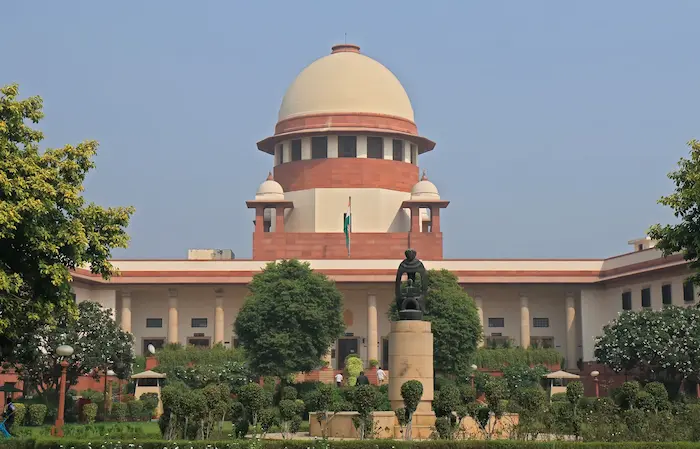
What is the News?
In Kattavellai @ Devakar v. State of Tamil Nadu (2025), the Supreme Court directed all State DGPs to establish strict protocols for DNA evidence handling in criminal investigations. This includes preparing Chain of Custody Registers and ensuring uniform documentation to prevent contamination and enhance reliability.
Key Takeaways & Guidelines:
Need for Protocols:
- Past lapses included delays in sending samples, poor storage conditions, and no custody records, raising risks of contamination.
- SC noted lack of uniformity across states.
Mandatory Guidelines Issued by SC:
- Collection & Packaging:
- DNA samples must be collected with care, properly sealed, and labelled.
- Timely Transportation:
- Samples to reach Forensic Science Laboratory (FSL) within 48 hours.
- If delayed → reasons must be recorded and preservation methods documented.
- Trial Court Oversight:
- Once stored, samples cannot be opened or tampered with without trial court authorization.
- Chain of Custody:
- Continuous documentation from collection → investigation → trial → final judgment.
- Investigating officer accountable for lapses.
Past Judicial Precedents:
- Anil v. State of Maharashtra (2014): SC upheld DNA profiling but warned of mishandling risks.
- Manoj v. State of Madhya Pradesh (2022): Reiterated importance of DNA as strong evidence but required quality control and strict adherence to procedure.
Significance:
- Ensures scientific reliability of forensic evidence.
- Prevents wrongful convictions due to mishandling.
- Strengthens credibility of criminal justice system.
- Balances individual rights with effective prosecution.
Exam Connect – Possible Questions
Prelims
1. In which of the following cases did the Supreme Court recently mandate uniform protocols for handling DNA evidence?
A. Anil v. State of Maharashtra (2014)
B. Kattavellai @ Devakar v. State of Tamil Nadu (2025)
C. Manoj v. State of Madhya Pradesh (2022)
D. Shreya Singhal v. Union of India (2015)
Answer: B. Kattavellai @ Devakar v. State of Tamil Nadu (2025)
2. According to Supreme Court guidelines (2025), DNA samples must be delivered to Forensic Science Laboratories within:
A. 24 hours
B. 48 hours
C. 72 hours
D. One week
Answer: B. 48 hours
Mains
1. “DNA evidence is a double-edged sword.” Discuss the importance of the Supreme Court’s 2025 guidelines in ensuring the reliability of forensic evidence while safeguarding the rights of the accused.
2. Critically examine the role of judicial intervention in standardising forensic evidence handling in India. What challenges remain in implementing these directions across states?
3. India’s First Bamboo-Based Ethanol Plant Inaugurated in Assam – Environment
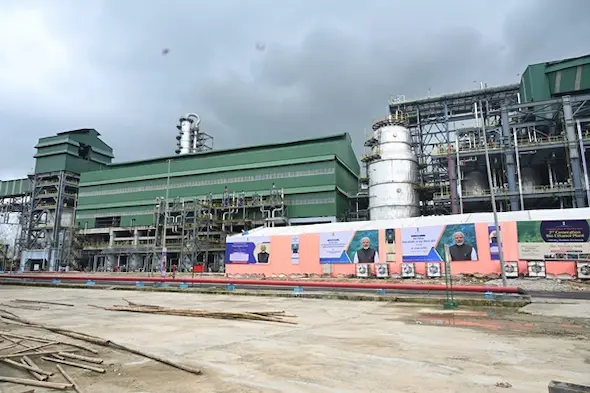
What is the News?
India’s first bamboo-based ethanol plant was inaugurated in Golaghat, Assam, marking a milestone in renewable energy, rural development, and industrial diversification. The facility will utilize bamboo—a non-food biomass—to produce ethanol and allied co-products, promoting a zero-waste circular economy.
Key Takeaways:
Bamboo as Feedstock:
- Processes: Pre-treatment → Hydrolysis → Fermentation → Distillation.
- Avoids competition with food crops (unlike sugarcane or maize).
Annual Output (Projected):
- 48,900 MT Ethanol
- 11,000 MT Acetic Acid
- 19,000 MT Furfural
- 31,000 MT Liquid CO₂
Economic Impact:
- Utilises 5 lakh tonnes of bamboo annually.
- Adds ~ ₹200 crore/year to Assam’s rural economy.
- Provides farmers new income streams → encourages bamboo plantation & agro-forestry.
Energy & Environment Significance:
- Reduces dependence on crude oil imports.
- Aligns with National Biofuel Policy and Ethanol Blending Programme (20% target by 2025–26).
- Supports low-carbon growth & energy security.
Co-Products & Zero-Waste Model:
- Acetic acid – industrial use.
- Furfural – chemical and polymer industries.
- Liquid CO₂ – food/beverage sector.
Policy & Regional Growth:
- Fits into Make in Assam & Make in India initiatives.
- Boosts industrial ecosystem in North-East India.
Why Bamboo-Based Ethanol Matters?
- Abundant in North-East: Assam has ~20% of India’s bamboo reserves.
- Climate-Friendly: Bamboo is fast-growing, carbon-sequestering.
- Socio-Economic Impact: Supports rural livelihoods, reduces migration, creates jobs.
- Strategic Energy Diversification: Helps India meet energy transition and net-zero goals.
Exam Connect – Possible Questions
Prelims
1. Which of the following is not a by-product of the newly inaugurated bamboo-based ethanol plant in Assam?
A. Furfural
B. Acetic Acid
C. Methane Gas
D. Liquid CO₂
Answer: C. Methane Gas
2. Which of the following is a key advantage of bamboo-based ethanol production over sugarcane-based ethanol?
A. Higher ethanol yield per hectare
B. No competition with food crops
C. Requires less processing
D. Generates no co-products
Answer: B. No competition with food crops
Mains
1. Discuss the significance of bamboo-based ethanol production in India’s energy security and rural development strategy. How does it align with the National Biofuel Policy?
2. “Bio-economy models like bamboo-based ethanol can balance sustainability with economic growth.” Critically evaluate this statement with reference to North-East India and its possible replication in states like Himachal Pradesh.
4. Kolhan’s Traditional Manki-Munda System – Polity
What is the News?
In Jharkhand’s West Singhbhum district, members of the Ho tribe protested against the Deputy Commissioner, alleging interference in their traditional Manki-Munda governance system after the removal of some village heads (Mundas).
The administration clarified that Mundas and Mankis remain integral to revenue and governance frameworks, but fears of losing tribal autonomy persist.
Key Takeaways & Background:
Traditional Governance Structure:
- Munda: Village head → resolves disputes, oversees village matters.
- Manki: Head of a cluster (pidh) of 8–15 villages.
- System is customary, decentralized, and community-driven.
Impact of British Colonial Policies:
- East India Company introduced taxation, weakening autonomy.
- 1833 – Wilkinson’s Rules (by Captain Thomas Wilkinson):
- Codified Manki-Munda system.
- Officially recognized tribal leadership but integrated it into colonial administration.
- Led to demographic shifts and loss of tribal land to outsiders.
Contemporary Issues:
- Complaints from SCs and OBCs about exclusion under the Munda-led system.
- Fears of state interference after some Mundas were removed.
- Hereditary leadership model is being questioned; calls for democratic reforms.
- Some suggest allowing non-tribals to participate in governance.
Need for Reform:
- Balance between preserving tradition and adapting to modern governance.
- Recognition of tribal customary systems alongside document-based, democratic administration.
- Greater inclusion to reduce intra-community tensions.
Constitutional & Governance Context:
- Fifth Schedule: Special protections for Scheduled Areas and Tribes.
- PESA Act, 1996: Recognises Gram Sabha powers in Scheduled Areas, aligning with traditional systems.
- Sixth Schedule (NE India): Provides autonomous district councils – shows another model of tribal self-governance.
- Manki-Munda highlights the challenge of harmonising customary law with statutory law.
Exam Connect – Possible Questions
Prelims
1. The traditional Manki-Munda system of governance is associated with which tribe?
A. Bhil
B. Ho
C. Santhal
D. Garo
Answer: B. Ho
2. Who codified the Manki-Munda system under “Wilkinson’s Rules” in 1833?
A. Lord Cornwallis
B. Captain Thomas Wilkinson
C. William Bentinck
D. Charles Metcalfe
Answer: B. Captain Thomas Wilkinson
Mains
1. Examine the relevance of traditional governance systems like the Manki-Munda in contemporary India. How can these systems be harmonised with constitutional democracy?
2. The tension between state administration and tribal self-governance often reflects deeper issues of autonomy and inclusion. Discuss with reference to the recent unrest in Jharkhand’s Kolhan region.
5. Cauvery River Dispute – Geography
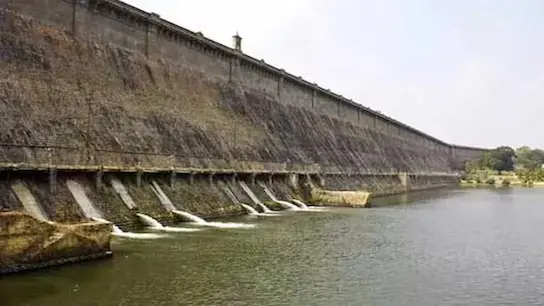
What is the News?
The Cauvery River dispute resurfaced after the Karnataka CM announced that recent rainfall enables release of water to Tamil Nadu, while also highlighting the importance of the Mekedatu Dam project for balancing water use and generating clean energy.
Key Geographical Details:
- Origin: Talakaveri, Brahmagiri Range, Kodagu (Karnataka).
- Length: ~800 km (Karnataka → Tamil Nadu → Bay of Bengal).
- Catchment Area: Spreads across Karnataka, Tamil Nadu, Kerala, and Puducherry.
- Major Tributaries: Hemavati, Arkavathi, Shimsha, Kabini, Amaravati, Bhavani.
Historical Background of Dispute:
- 1892 & 1924 Agreements between Mysore (now Karnataka) and Madras Presidency (now TN).
- 1924 Pact: Valid for 50 years, expired in 1974 → disputes re-emerged.
- 1990: Cauvery Water Disputes Tribunal (CWDT) constituted under Inter-State River Water Disputes Act, 1956.
- 1998: Formation of Cauvery River Authority for interim orders.
- 2013 Final Tribunal Award:
- Tamil Nadu: 419 TMC
- Karnataka: 270 TMC
- Kerala: 30 TMC
- Puducherry: 7 TMC
- Karnataka’s obligation: Release 177.25 TMC annually to Tamil Nadu (normal monsoon years).
Current Issues:
- Monsoon Variability: Shortfalls → “distress formula” applied, sparking disputes.
- Mekedatu Dam Project:
- Proposed at Cauvery–Arkavathi confluence (near Kanakapura, Karnataka).
- Aims: Water regulation + Hydropower generation.
- Karnataka’s View: Benefits both states, improves water management.
- Tamil Nadu’s Concern: Reduced downstream flows, potential violation of CWDT allocation.
- Requires Centre’s clearance & TN’s approval.
Legal & Constitutional Provisions:
- Article 262: Parliament can adjudicate inter-state river disputes.
- Inter-State River Water Disputes Act, 1956: Legal basis for tribunals like CWDT.
- Supreme Court Jurisdiction: Though limited by Article 262, SC has intervened in ensuring compliance (e.g., enforcing tribunal awards).
Significance:
- Highlights federal tensions in natural resource sharing.
- Case study for Centre–State relations and judicial enforcement.
- Demonstrates how climate variability worsens interstate disputes.
- Mekedatu project adds environment vs. development dimension.
Exam Connect – Possible Questions
Prelims
1. The Cauvery River originates from which of the following locations?
A. Mullayanagiri, Karnataka
B. Talakaveri, Brahmagiri Hills, Karnataka
C. Nandi Hills, Karnataka
D. Nilgiris, Tamil Nadu
Answer: B.Talakaveri, Brahmagiri Hills, Karnataka
2. The Mekedatu Dam, often in news, is proposed at the confluence of which rivers?
A. Cauvery & Kabini
B. Cauvery & Bhavani
C.Cauvery & Arkavathi
D. Cauvery & Amaravati
Answer: C. Cauvery & Arkavathi
Mains
1. Discuss the constitutional and legal mechanisms for resolving inter-state river water disputes in India. Illustrate your answer with reference to the Cauvery dispute.
2. “The Cauvery River dispute reflects both challenges of federalism and climate change.” Critically examine this statement with reference to the Mekedatu Dam project.
6. How Serious is the Global Plastic Pollution Crisis? – Environment
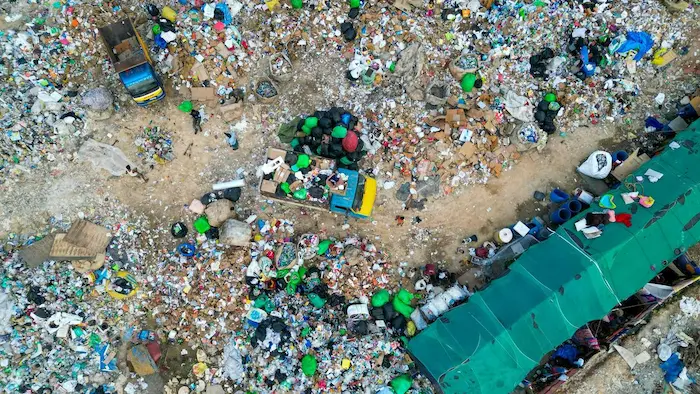
What is the News?
The global plastic pollution crisis has reached alarming levels, threatening ecosystems, human health, and economies. With plastic production at 500 million tonnes (2024) and waste projected to triple by 2060, this year’s World Environment Day theme — Ending Plastic Pollution — underlines the urgency of tackling this problem through global, national, and individual action.
Scale of the Problem:
- Production Surge:
- 2000–2019: Plastic production doubled to 460 MT.
- 2024: Reached 500 MT, with 400 MT waste generated.
- Waste Management Failure:
- 2019: 353 MT of waste.
- Only 9% recycled; 50% in landfills; 22% leaked into environment.
- Oceanic Threat:
- ~11 MT of plastic enters oceans every year.
- Already ~200 MT in oceans.
- By 2050: Oceans may have more plastic than fish (by weight).
- Climate Connection:
- Plastics = 3.4% of global GHG emissions.
- By 2040: Could consume 19% of global carbon budget.
- Health & Ecological Risks:
- Plastics fragment into micro- & nano-particles, infiltrating food chains, soil, rivers, oceans.
- Found in mountain snow, deep oceans, and even human blood & lungs.
- Risks include toxicity, endocrine disruption, and bioaccumulation.
Global Response:
- UNEA-5 (2022):
- All 193 UN member states agreed to negotiate a legally binding global treaty against plastic pollution.
- UNEP Target:
- Reduce plastic waste by 80% within two decades through recycling & innovation.
- Policy Measures Proposed:
- Ban Single-Use Plastics (SUPs): Urgent phase-out of unnecessary petrochemical-based plastics.
- Extended Producer Responsibility (EPR): Producers accountable for plastic life-cycle.
- Recycling Revolution: Only 6% plastics currently from recycled sources → requires scaling up with tech & incentives.
- Circular Economy Approach: Shift from “produce–use–discard” to reuse–recycle–recover.
Role of Individuals & Media:
- Greener Alternatives: Shift to cloth bags, steel bottles, biodegradable packaging.
- Awareness Campaigns: Media shapes consumer behaviour and government action.
- Behavioural Change: Citizens must reduce demand for plastic alongside systemic reforms.
Exam Connect – Possible Questions
Prelims
1. According to UNEP (2022), global plastic waste can be reduced by 80% in the next two decades mainly through:
A. Carbon trading and carbon credits
B. Recycling, innovation, and circular economy practices
C. Use of nuclear and hydrogen energy
D. Expansion of marine protected areas
Answer: B. Recycling, innovation, and circular economy practices
2. Which of the following contributes the most to global plastic waste?
A. Textiles
B. Packaging
C. Construction
D. Fishing gear
Answer: B. Packaging
Mains
1. Plastic pollution is no longer an environmental issue alone, but a public health and governance challenge. Examine the global and national measures needed to address this crisis.
2. India has banned several categories of single-use plastics, yet plastic waste continues to rise. Critically evaluate the effectiveness of such bans and suggest a roadmap for sustainable plastic management in states like Himachal Pradesh.

